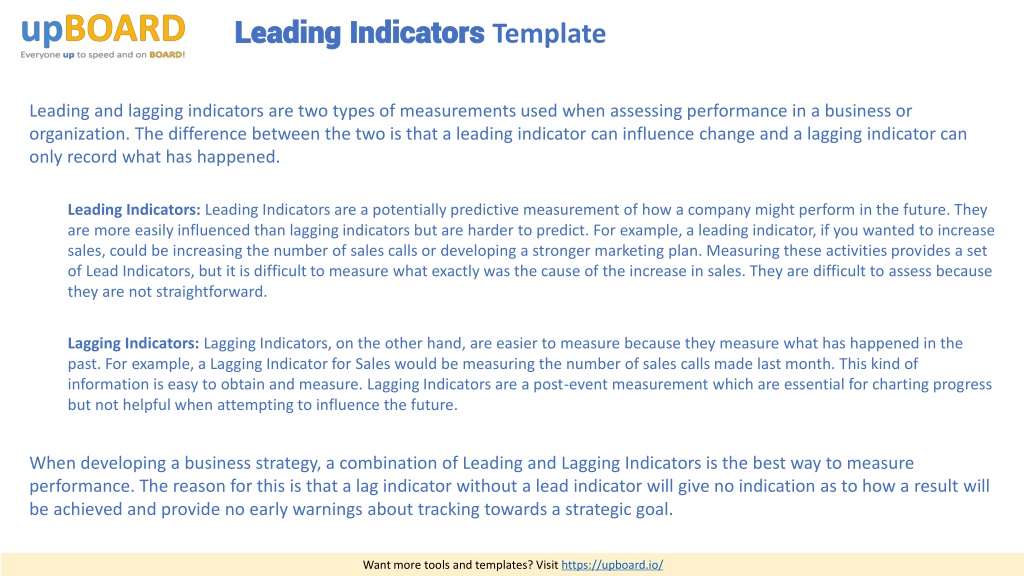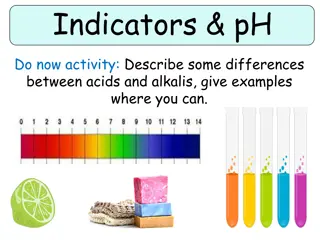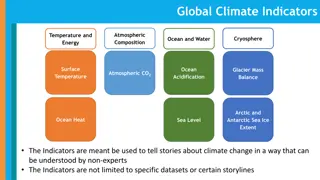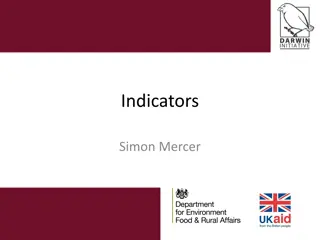Understanding Leading and Lagging Indicators in Business
Leading and lagging indicators play crucial roles in assessing the performance of a business or organization. Leading indicators are predictive, influencing future outcomes, while lagging indicators record past events. A strategic combination of both types is essential for measuring performance effectively. Leading indicators are harder to predict but offer insights into potential future performance, while lagging indicators provide tangible data on past performance. Utilizing a mix of leading and lagging indicators helps in charting progress and aiming for strategic goals in business strategies.
Download Presentation

Please find below an Image/Link to download the presentation.
The content on the website is provided AS IS for your information and personal use only. It may not be sold, licensed, or shared on other websites without obtaining consent from the author. Download presentation by click this link. If you encounter any issues during the download, it is possible that the publisher has removed the file from their server.
E N D
Presentation Transcript
Leading Indicators Leading Indicators Template Leading and lagging indicators are two types of measurements used when assessing performance in a business or organization. The difference between the two is that a leading indicator can influence change and a lagging indicator can only record what has happened. Leading Indicators: Leading Indicators are a potentially predictive measurement of how a company might perform in the future. They are more easily influenced than lagging indicators but are harder to predict. For example, a leading indicator, if you wanted to increase sales, could be increasing the number of sales calls or developing a stronger marketing plan. Measuring these activities provides a set of Lead Indicators, but it is difficult to measure what exactly was the cause of the increase in sales. They are difficult to assess because they are not straightforward. Lagging Indicators: Lagging Indicators, on the other hand, are easier to measure because they measure what has happened in the past. For example, a Lagging Indicator for Sales would be measuring the number of sales calls made last month. This kind of information is easy to obtain and measure. Lagging Indicators are a post-event measurement which are essential for charting progress but not helpful when attempting to influence the future. When developing a business strategy, a combination of Leading and Lagging Indicators is the best way to measure performance. The reason for this is that a lag indicator without a lead indicator will give no indication as to how a result will be achieved and provide no early warnings about tracking towards a strategic goal. Want more tools and templates? Visit https://upboard.io/
Leading Indicators Template Leading Indicators Template Status Enter Business Objective or Strategy Here # On Track Leading Indicators Description Accountable Enter headline description of Leading Indicator here Name of Owner here Leading Indicator Measures Quarterly Targets (measured across four quarters to reach annual target goal) Q1 Q2 Q3 Q4 $$##%% Stretch Goal (quantifiable best case): $$##%% Target Goal (quantifiable realistic case): No. Supporting Leading Indicators Owner Supporting Measures #.1 Name of owner Quantifiable metric On track #.2 Name of owner Quantifiable metric At Risk #.3 Name of owner Quantifiable metric Behind #.4 Name of owner Quantifiable metric #.5 Name of owner Quantifiable metric Want more tools and templates? Visit https://upboard.io/
Lagging Indicators Template Lagging Indicators Template Status Enter Business Objective or Strategy Here # On Track Lagging Indicators Description Accountable Enter headline description of Lagging Indicator here Name of Owner here Lagging Indicator Measures Quarterly Targets (measured across four quarters to reach annual target goal) Q1 Q2 Q3 Q4 $$##%% Stretch Goal (quantifiable best case): $$##%% Target Goal (quantifiable realistic case): No. Supporting Lagging Indicators Owner Supporting Measures #.1 Name of owner Quantifiable metric On track #.2 Name of owner Quantifiable metric At Risk #.3 Name of owner Quantifiable metric Behind #.4 Name of owner Quantifiable metric #.5 Name of owner Quantifiable metric Want more tools and templates? Visit https://upboard.io/
Join the upBOARD Community to instantly find, customize or create your own business processes including: Interactive online templates Full business processes Dashboards & analytics Team collaboration tools Want more tools and templates? Visit https://upboard.io/























